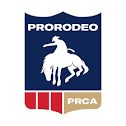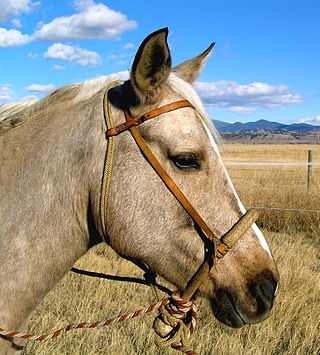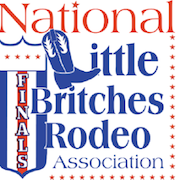
Rodeo is a competitive equestrian sport that arose out of the working practices of cattle herding in Spain and Mexico, expanding throughout the Americas and to other nations. It was originally based on the skills required of the working vaqueros and later, cowboys, in what today is the western United States, western Canada, and northern Mexico. Today, it is a sporting event that involves horses and other livestock, designed to test the skill and speed of the cowboys and cowgirls. American-style professional rodeos generally comprise the following events: tie-down roping, team roping, steer wrestling, Steer roping, saddle bronc riding, bareback bronc riding, bull riding and barrel racing. The events are divided into two basic categories: the rough stock events and the timed events. Depending on sanctioning organization and region, other events such as breakaway roping, goat tying, and pole bending may also be a part of some rodeos. The "world's first public cowboy contest" was held on July 4, 1883, in Pecos, Texas, between cattle driver Trav Windham and roper Morg Livingston.

A cowboy is an animal herder who tends cattle on ranches in North America, traditionally on horseback, and often performs a multitude of other ranch-related tasks. The historic American cowboy of the late 19th century arose from the vaquero traditions of northern Mexico and became a figure of special significance and legend. A subtype, called a wrangler, specifically tends the horses used to work cattle. In addition to ranch work, some cowboys work for or participate in rodeos. Cowgirls, first defined as such in the late 19th century, had a less-well documented historical role, but in the modern world work at identical tasks and have obtained considerable respect for their achievements. Cattle handlers in many other parts of the world, particularly South America and stockmen and jackaroos in Australia, perform work similar to the cowboy.

The vaquero is a horse-mounted livestock herder of a tradition that has its roots in the Iberian Peninsula and extensively developed in Mexico from a methodology brought to the Americas from Spain. The vaquero became the foundation for the North American cowboy, in Northern Mexico, Southwestern United States, and Western Canada.

Charles Marion Russell, also known as C. M. Russell, Charlie Russell, and "Kid" Russell, was an American artist of the American Old West. He created more than 2,000 paintings of cowboys, Native Americans, and landscapes set in the western United States and in Alberta, Canada, in addition to bronze sculptures. He is known as "the cowboy artist" and was also a storyteller and author. He became an advocate for Native Americans in the west, supporting the bid by landless Chippewa to have a reservation established for them in Montana. In 1916, Congress passed legislation to create the Rocky Boy Reservation.

A lasso or lazo, also called in Mexico reata and la reata, and in the United States riata, or lariat, is a loop of rope designed as a restraint to be thrown around a target and tightened when pulled. It is a well-known tool of the Mexican and South American cowboys, then adopted, from the Mexicans, by the cowboys of the United States. The word is also a verb; to lasso is to throw the loop of rope around something.

Charro, in Mexico, is historically the horseman from the countryside, the Ranchero, who worked on the haciendas and rural areas performing all his tasks on horseback, working as vaqueros and caporales, among other jobs. He was renowned for his superb horsemanship, for his skill in handling the lasso, and for his unique costume designed especially for horseback riding. Today, this name is given to someone who practices charreada, considered the national sport of Mexico which maintains traditional rules and regulations in effect from colonial times up to the Mexican Revolution.

Charrería is a sport and discipline arising from equestrian activities and livestock traditions used in the haciendas of old Mexico.

Western wear is a category of men's and women's clothing which derives its unique style from the clothes worn in the 19th century Wild West. It ranges from accurate historical reproductions of American frontier clothing, to the stylized garments popularized by Western film and television or singing cowboys such as Gene Autry and Roy Rogers in the 1940s and 1950s. It continues to be a fashion choice in the West and Southwestern United States, as well as people associated with country music or Western lifestyles, for example the various Western or Regional Mexican music styles. Western wear typically incorporates one or more of the following, Western shirts with pearl snap fasteners and vaquero design accents, blue jeans, cowboy hat, a leather belt, and cowboy boots.

The Professional Rodeo Cowboys Association (PRCA) is the largest rodeo organization in the world. It sanctions events in the United States, Canada, and Mexico, with members from said countries, as well as others. Its championship event is the National Finals Rodeo (NFR). The PRCA is headquartered in Colorado Springs, Colorado, United States.

A hackamore is a type of animal headgear which does not have a bit. Instead, it has a special type of noseband that works on pressure-points on the face, nose, and chin. Hackamores are most often seen in western riding and other styles of riding derived from Spanish traditions, and are occasionally seen in some English riding disciplines such as show jumping and in the stadium phase of eventing. Various hackamore designs are also popular for endurance riding. While usually used to start young horses, hackamores are often seen on mature horses with dental issues that would make the use of a bit painful, and on horses with mouth- or tongue-injuries that would be aggravated by a bit. Some riders also like to use them in the winter to avoid putting a frozen metal bit into a horse's mouth. In the Charro tradition of Mexico, the jáquima and bozal substituted for the serrated iron cavesson used in Spain for training horses.
Western lifestyle or cowboy culture is the lifestyle, or behaviorisms, of, and resulting from the influence of, the attitudes, ethics and history of the American Western cowboy. In the present day these influences affect this sector of the population's choice of recreation, clothing, and consumption of goods.

The National Multicultural Western Heritage Museum, formerly the National Cowboys of Color Museum and Hall of Fame, is a museum and hall of fame in Fort Worth, Texas.

A bosal or bozal(,, or ) is a type of noseband used on the classic hackamore of the vaquero tradition. It is usually made of braided rawhide and is fitted to the horse in a manner that allows it to rest quietly until the rider uses the reins to give a signal. It acts upon the horse's nose and jaw. In the Mexican Charro tradition, the Bozal substituted for the serrated iron cavesson used in Spain. Though seen in both the "Texas" and the "California" cowboy traditions, it is most closely associated with the "California" style of western riding. Sometimes the term bosal is used to describe the entire classic hackamore or jaquima. Technically, however, the term refers only to the noseband portion of the equipment.
History of rodeo tracks the lineage of modern Western rodeo.

Florence "Flores" LaDue (1883–1951) was the stage name of vaudeville performer and champion trick roper Grace Bensel.
Trevor Brazile is a semi-retired American rodeo champion who competed in the Professional Rodeo Cowboys Association (PRCA). He was inducted into the ProRodeo Hall of Fame in 2022. He holds the record for the most PRCA world championship titles with 26. He won his 26th title in 2020. He also holds the record for the most all-around cowboy world champion titles at 14, breaking the record of 7 titles held by Ty Murray; Murray's last earned was in 1998.

The National Little Britches Rodeo (NLBRA) is one of the oldest youth based rodeo organizations. It was founded in 1952, and sanctions rodeos in over 33 states. NLBRA allows children ages 5 to 18 to compete in a variety of different rodeo events. It’s championship event is the National Little Britches Finals Rodeo. The NLBRA headquarters is based in Colorado Springs, Colorado, United States. The NLBRA was founded in Littleton, Colorado. The Finals were held in Pueblo, Colorado, but moved to the Lazy E in Oklahoma in 2016.
Mary Walker is a world champion barrel racer. She won the World Barrel Racing Championship in 2012. Despite several traumatic events in the two preceding years, she persevered. She also became the oldest woman, at 53, in rodeo to win a world championship in the barrel racing event at the National Finals Rodeo. She was later surpassed by Mary Burger in 2016 when Burger won at age 68. She lost her only child to a car accident in 2011. Two months later, Latte, her horse, fell on her during competition and severely injured her. It was about a year and a half after these incidents that she won her world title. Walker was inducted into the National Cowgirl Museum and Hall of Fame in 2013.
Rose Bascom also known as Texas Rose Bascom is a 1981 National Cowgirl Museum and Hall of Fame trick rider inductee.
Nancy Sheppard is a ProRodeo Hall of Fame trick rider and trick roper who was inducted in 2003.

















